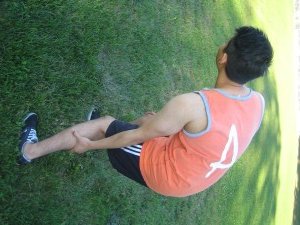Muscle cramps are considered as involuntary and forcibly contracted muscles that do not relax. In most cases, cramps can affect any muscle under your voluntary control. The muscles that cover two joints are more susceptible to cramps. Take note that cramps can involve a certain part or the entire muscle as well as several muscles in a group.
The commonly affected muscle groups include the back of the lower leg, back of the thigh and the front of the thigh. Cramps can also occur in the hands, feet, arms, and abdomen and also along the rib cage.
Who are prone to muscle cramps?
Any individual can experience a muscle cramp at one point in their lives. It can occur while playing sports such as bowling, tennis, swimming, golf or while exercising. Cramps can also occur while sitting or walking.
There are some individuals who are prone to muscle cramps and can easily develop one on a regular basis with any activity that involves physical exertion. Those who are at high risk for cramps and other heat related ailments include young children, infants, elderly, those with chronic diseases, overweight, those taking certain medications and those who overexert during exercise or work.
Athletes engaged in endurance sports are also prone to cramps as well as older individuals who perform strenuous physical activities.
Causes of muscle cramps
Even though the precise cause of cramps is unknown, it is believed that lack of stretching and fatigue to the muscles results to abnormalities in the muscle contraction control. Other possible factors include exercising under extreme heat, poor conditioning, dehydration and depletion of electrolytes.
Always bear in mind that muscles are fiber bundles that contract and expand in order to produce movement. Stretching helps lengthen the muscle fibers so that they can contract and tighten vigorously during exercise. If your body is not properly conditioned, it results to muscle fatigue. In case the muscles are overused, the oxygen supply of the muscles is depleted, resulting to the buildup of waste products and spasm.

Symptoms of muscle cramps
Cramps can vary in intensity that ranges from a minimal tic to excruciating pain. A muscle cramp typically feels hard when touched and can appear distorted or twitch under the skin. It can last for a few seconds up to 15 minutes or longer. Additionally, it can also recur several times before it eventually goes away.
Treatment for muscle cramps
Cramps typically go away on their own without requiring a visit to your doctor. There are first aid measures that you can perform.
- Instruct the individual to stop any activity that triggered the cramp.
- Stretch gently and massage the affected area by holding it in a stretched position until the cramping stops.
- Apply heat to the tight muscles or cold to tender muscles.
How to prevent cramps
The best way to prevent muscle cramps is to boost your overall fitness level. This is possible by performing regular exercises before or after your workout routine to stretch the muscle groups that are susceptible to muscle cramps.
